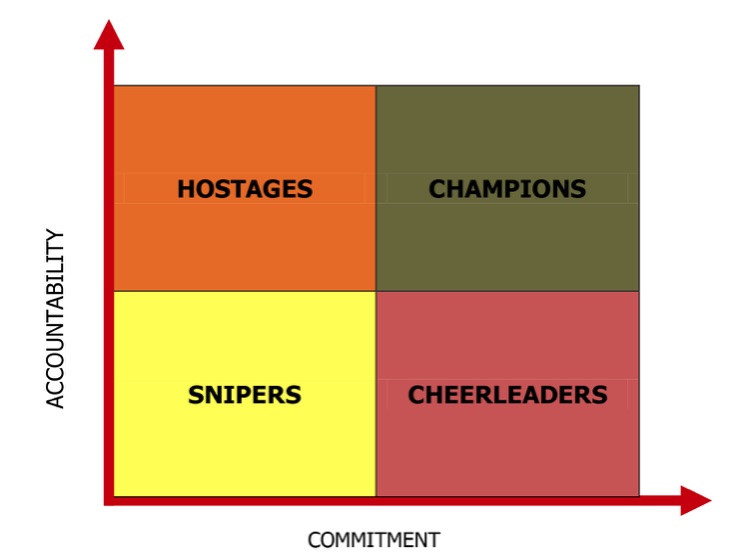Tip 22: Manage Your Stakeholders
Inasmuch as we tend to think of organizations as inorganic entities, the fact is that organizations are made up of people. People have their own individual quirks and behaviors. The people in your organization who will have a stake in your partnership or alliance can influence the growth and progress of the partnership or alliance with their quirks and behaviors.
In an ideal world, everyone involved in a partnership would be enthusiastically supporting it and working to move it forward. Unfortunately, the world is not always ideal, and there will be stakeholders in your alliance who don’t actually like that the alliance exists. Or they may not have any objections to the existence of the alliance but they are not as keen on it as you would like them to. You need to work on these stakeholders to transform them into real supporters for your partnership.
In an alliance, the alliance manager will need to spend a substantial amount of time in their organization to align the stakeholders to the goals and objectives of the alliance, as well as to secure their support to go forward in the execution. Norma Watenpaugh of Phoenix Consulting Group, in her 2011 article “Alliance Stakeholder Alignment,” describes a useful matrix for managing internal alignment. This matrix might help you understand and manage the task of getting these stakeholders aligned with the partnership’s goals more effectively.
As you can see, the matrix is a two-by-two. In this matrix, you can classify the stakeholders based on their behavior and buy-in, and you can approach them accordingly.
Champions are the kind of people you would like to have in your alliance. As the alliance manager, you should be a champion and so should your executive sponsor. Champions are highly accountable and highly committed to the success of the partnership. They are the ones driving the partnership forward.
Cheerleaders are great supporters for the partnership, but they have no accountability for its success. You want these people on your team for their positive attitude towards your endeavor.

If you give them more accountability towards the success of your partnership, you may be able to transform them into champions.
Hostages are somewhat stuck. They don’t believe in the alliance, they don’t have any commitment to it, but they are still accountable for the success of the alliance because of their job responsibilities. They will most likely fulfill their minimum obligations, but they will not take any proactive measures to secure the alliance’s overall success.
Snipers are the dangerous ones you need to look out for. It might not always be clear to you who they are. They do not support the alliance and they have no accountability for its success. They might actually even benefit in seeing your alliance fail. Their goals will be in conflict with the goals of the alliance.
Maybe you recognize these people in your own partnerships. By classifying the stakeholders in the matrix described above, you will learn who you need to deal with and how. You will have to prioritize dealing with the hostages and snipers. Having them look for other assignments may not be the best solution, and you may not even be in the position to ask them to do so.
More often than not, a stakeholder who is not supportive of the alliance behaves that way because they don’t have enough of the information they need about the alliance. The reason this stakeholder does not support the alliance may be because they may not understand the nature of the alliance, the benefits the alliance will bring to your organization, and the stakeholder’s particular role in its success. A good approach to dealing with this stakeholder and getting them to come to your side is to meet with them early on and address their concerns. Maybe you can convince them of the value of the partnership and hence convert them into cheerleaders, maybe even champions.
Getting all the stakeholders aligned and supportive of the alliance very early on in the alliance’s formative phase is an essential key towards its future success.
Feel free to share your thoughts on this subject in the comment section below, or join the conversation on LinkedIn!
I am publishing my ebook “25 tips for successful Partnerships and Alliances” in parts here on my website. Every other week a tip from the book will be shared, in the weeks in between I will publish my regular column. If you prefer to read the tips in the ebook faster rather than wait a full year then click here to purchase your own copy of the book.